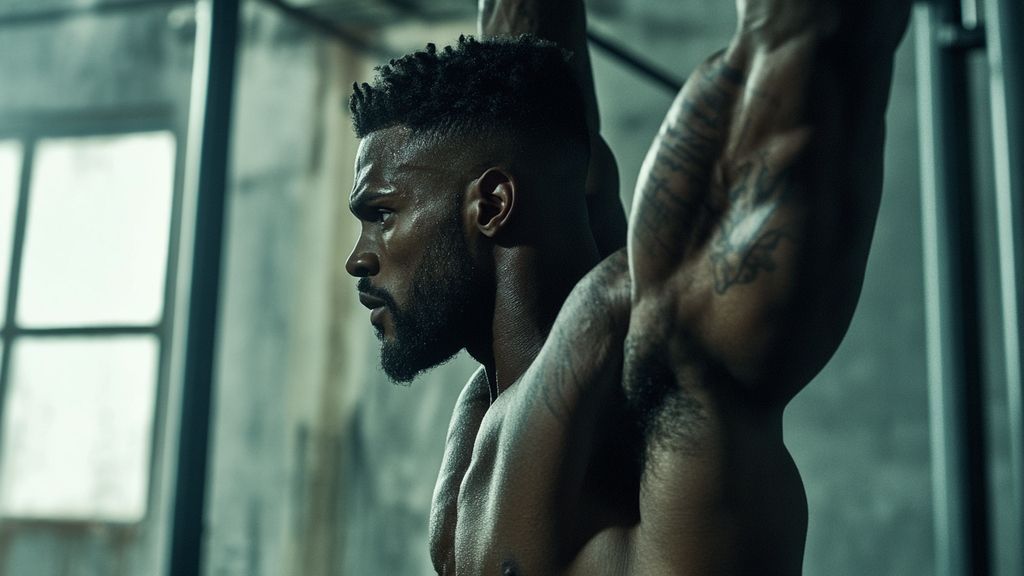The pull-up exercise is a cornerstone of upper body strength training, famous for its ability to engage the lats, biceps, and core effectively. While many view the pull-up as a simple movement, the grip you choose plays a crucial role in targeting different muscle groups. By exploring various grips, you can enhance your workouts, prevent injuries, and achieve specific fitness goals more efficiently. In this piece, we will journey through the diversity of pull-up grips, their benefits, and how to incorporate them effectively into your routine.
Understanding which grip suits your needs not only helps maximize strength training but can also aid in muscle recovery and overall exercise longevity. Whether you are a beginner or a seasoned athlete, varying your grip is essential for building a balanced physique. Enable your body to reach its full potential by integrating these techniques into your workouts.
Understanding Different Pull-Up Grips
Pull-ups are a celebrated exercise in the fitness community, but their execution can vastly differ based on grip type. The choice of grip affects the muscle engagement and complexity of the workout, making it imperative to understand the nuances of each variation.
Pronated Grip (Pull-Up)
The traditional pronated grip involves the palms facing away from you. This grip maximizes the engagement of the lats, rhomboids, and upper back, which are essential for building a powerful upper body. For those who often rely on their biceps during pull-ups, adopting this grip encourages the activation of the lats, giving your pulling movements a substantial boost. To get the most out of this grip, begin by focusing on scapular retraction and adequately engaging your back muscles. Accessories such as horizontal single-arm band rows and scapular pull-ups can be valuable in enhancing your strength for this specific grip.
Supinated Grip (Chin-Up)
Opting for a supinated grip lies in contrast to the pronated grip, with palms facing towards you. Chin-ups are particularly effective for those who want to enhance both their bicep and lat strength. This grip allows for a greater range of motion and emphasizes the chest and biceps more than pronated pulls. To execute chin-ups effectively, maintain proper form by engaging the lats while preventing your shoulders from shrugging upwards. Incorporating straight arm lat pulldowns and hollow body holds as supplementary exercises can significantly improve your performance in chin-ups.
Exploring Wider and Mixed Grips

Different grips can dramatically alter your workout dynamics. Among these, wide grip and mixed grip pull-ups are effective strategies for varied muscle engagement.
Wide Grip Pull-Ups
The wide grip pull-up is often touted for its ability to recruit more of the lats compared to standard grips. This grip encourages more muscle fibers to activate simultaneously, beneficial for individuals looking to bulk up muscle mass. While it can be more challenging for most, ensuring that your chin remains tucked and your ribcage stays down will not only foster better form but also enhance results. Consider integrating wide grip variations into your existing workout regimen to keep your body challenged.
Mixed Grip Pull-Ups
The mixed grip pull-up combines the advantages of underhand and overhand grips. One hand uses a pronated grip, while the other remains in a supinated position. This variation facilitates unique muscle engagement across both sides of the body. It can also prevent grip fatigue, allowing for more extended training sets. If you’re considering heavier lifts or weighted pull-ups, the mixed grip can lower the stress on your grip muscles effectively.
The Power of Neutral and Grenade Grip Variations
Neutral and grenade grips provide fun variations that also challenge your strength in unique ways.
Neutral Grip Pull-Ups
A neutral grip involves positioning your palms facing each other. This grip is often regarded as the most comfortable, reducing strain on your shoulders and wrists. It engages a well-rounded range of upper body muscles, including the biceps, deltoids, and forearms, making it an excellent choice for those new to pull-ups. Neutral grip pull-ups tend to be easier and allow you to accumulate more volume over time when compared to other variations. Those aiming for increased repetitions or endurance testing may find this grip particularly useful.
Grenade Grip Pull-Ups
The unique grenade grip uses specialized grips that resemble grenade shapes. This not only stimulates the upper body but also emphasizes grip strength and forearm development. As these grips are inherently thicker than traditional bars, they promote muscle engagement in the forearms, which can be beneficial for activities requiring strong grip strength such as rock climbing. If wrist or elbow discomfort presents issues during traditional pull-ups, consider grenade grips as an alternative for your routines.
Innovative Towel Grip Pull-Ups

Among the lesser-known grips, towel pull-ups present a novel approach to increasing grip and forearm strength.
Towel Grip Pull-Ups
Executing towel grip pull-ups involves draping a towel over a pull-up bar and gripping the ends. This setup not only challenges your grip strength but also significantly impacts arm and back muscles. Engaging in this variation can build strength that translates well to other functional movements, like rope climbs.
As you navigate towel pull-ups, one must focus on maintaining a proper body position, as it’s easy to lose form during the exercise. Keeping your rib cage and chin down while pulling upwards ensures optimal performance throughout the movement.
Choosing the Right Grip for Your Goals
Ultimately, the grip you choose must align with your fitness aspirations.
Assessing Your Strength and Weaknesses
Evaluate your strength levels and understand which areas need improvement. A well-rounded fitness routine should incorporate various grips to engage different muscles and foster balance. For beginners, starting with a neutral or supinated grip is advisable, gradually incorporating advanced variations as strength and confidence grow. Alternatively, if your goal is to enhance bicep strength, focusing on supinated grips should be a priority.
How to Incorporate Different Grips into Your Training
Integrating various grips into your routine can be done progressively. For those following an established strength program, aim to include 2–3 different grip variations into your pull-up sessions each week. Consider setting aside specific days dedicated to concentrated grip training, facilitating further improvement and adaptation.
Implement accessory movements that complement your pull-up work, aiming to engage the same primary muscle groups targeted during pull-ups. As a CrossFit specialist, it’s essential to help clients understand the importance of grip diversity and how it can lead to improved performance and strength gains.
By actively employing different pull-up grips, you open the door to diversifying your training while efficiently working towards your performance goals. Whether you’re targeting muscle hypertrophy, increasing endurance, or enhancing grip strength, exploring various pull-up options can lead to sustainable progress over time.
